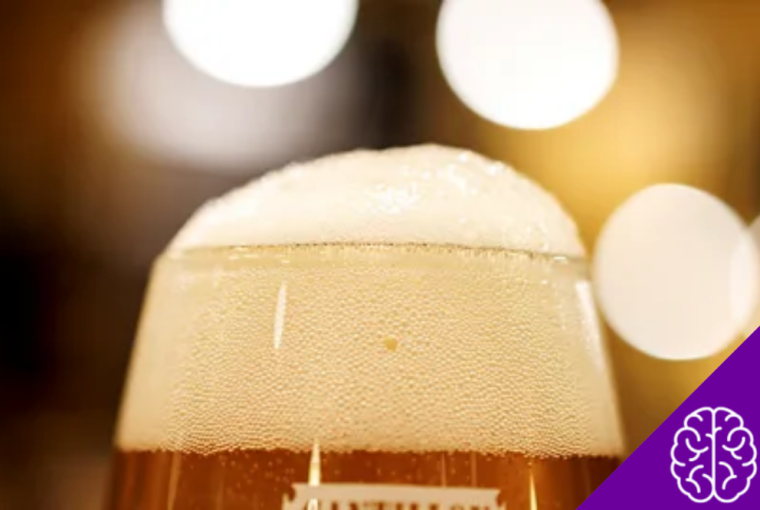There’s nothing quite like cracking open a cold beer and savoring its distinct flavor. Whether you’re a fan of hoppy IPAs, crisp lagers, or malty stouts, every beer offers a unique taste experience. But have you noticed something different about your favorite brews lately? You’re not imagining it—beer flavors are changing, and the reason behind it might surprise you.
This blog, Insight Factory, dives into the surprising factors behind these flavor shifts. From environmental changes to new brewing techniques, we explore what’s shaking up the beer industry and how it might affect the taste of your favorite pint.
What’s Causing Beer Flavors to Change?
Several factors are influencing the flavors in your go-to beers. These range from natural variables, like climate change, to trends impacting the brewing process.
1. Climate Change and Its Effects on Ingredients
Beer relies on natural ingredients like barley, hops, water, and yeast. But with changing climates across the globe, the availability and quality of these ingredients are shifting in ways that directly impact flavor profiles.
Hops are Feeling the Heat
Hops give beer its bitterness and aroma, but they’re highly sensitive to environmental changes. Rising temperatures and unpredictable weather patterns are reducing the yield of hop crops while also affecting their chemical makeup. For instance, some hop varieties are producing different levels of alpha acids, which are responsible for the bitterness in beer.
Barley, the Backbone of Beer
Barley, a key ingredient in beer production, is also under threat. Droughts and extreme weather can reduce the quality and quantity of barley harvests, leading to changes in malt flavor. A recent study even revealed that climate change could lead to a 16% reduction in barley yields globally, putting pressure on breweries to adapt.
Water Sources are Changing
Water quality changes due to contamination or drought can also alter a beer’s flavor. Many breweries pride themselves on their local water sources, but shifting environmental conditions can impact mineral content and affect how beer tastes.
2. Innovations in Brewing Techniques
While environmental changes are unpredictable, breweries are also intentionally shaking things up with new brewing innovations.
Experimenting with Yeast Strains
Yeast is responsible for fermentation, and it plays a significant role in a beer’s flavor profile. Breweries are increasingly experimenting with non-traditional yeast strains to create unique flavors. Some are even using genetically modified yeast to mimic fruitier or spicier notes without needing additional ingredients.
Use of Adjuncts and Local Ingredients
To adapt to ingredient shortages, some breweries are turning to adjuncts—non-barley ingredients like rice, corn, or local grains—to maintain production. While this can stabilize supply, it definitely changes the flavor and texture of beer.
New Technologies for Consistency
Advanced brewing systems are enabling consistent results by precisely controlling fermentation temperature and timing. While this level of control reduces batch-to-batch variations, it might also mean that small idiosyncrasies in flavor—a hallmark for traditional brewing—are disappearing.
3. The Rise of Beer Trends and Consumer Preferences
Craft beer enthusiasts are always in search of exciting, new offerings. This demand is influencing the kinds of beers brewers create and, in turn, changing the flavors available on the market.
Trend Toward Hazy and Fruited IPAs
Craft beer drinkers are loving heavily flavored beers. Hazy IPAs with smooth, juicy notes and fruited sours are leading the trend. Breweries that once focused on traditional styles are adapting to stay relevant, often creating beers with bolder, more experimental flavors.
Low-Alcohol and Non-Alcoholic Options
The new wave of low-alcohol (or no-alcohol) beers is also making a mark. These lighter beers require a completely different brewing process, sometimes resulting in a more subdued taste compared to their boozy counterparts.
The Sustainability Shift
Many breweries are committing to sustainability. Some are using recycled water, rethinking packaging, or even growing ingredients onsite. These practices are great for the planet but can introduce subtle changes in flavor profiles.
4. Globalization and Cross-Cultural Influences
Beers are no longer confined to regional tastes. Brewers are borrowing traditions and ingredients from around the world, blending styles to create hybrid beers. For example, Japanese rice lagers and Mexican Vienna lagers are influencing flavors globally, bringing new tastes to your local grocery store shelves.
How Taste Buds are Adapting
Interestingly, it’s not just the beer changing—your perception of flavor evolves over time, too. Exposure to diverse flavor-packed food and drinks, like gourmet coffee or spicy cuisines, alters how you experience flavors in beer. What once seemed bold might now taste subtle or familiar.
What Does This Mean for Beer Lovers?
While some worry that traditional beer flavors are disappearing, others see this evolution as exciting. Change forces breweries to innovate, and it opens the door to new styles and experiences for beer enthusiasts.
Here’s how you can explore and enjoy the changing landscape of beer flavors:
- Try Local Breweries: Many local breweries experiment with new styles and fresh ingredients. Visit and taste what your region has to offer.
- Appreciate Seasonal Beers: Seasonal brews often showcase sustainability practices or highlight flavors specific to a time of year.
- Diversify Your Palate: Don’t stick to just one beer style! Explore sours, stouts, pilsners, and lagers to discover new favorites.
- Learn More About Sustainability: Support breweries that are transparent about their sustainability practices and ingredient sourcing.
Savor the Change in Every Sip
The world of beer is changing—and there’s no better time to be a beer lover. Whether it’s the result of environmental shifts, brewing innovations, or evolving trends, these changes are a testament to the creativity and resilience of the beer industry.
Next time you notice something a little different in your pint, savor it. It’s a flavor born of history, ingenuity, and the evolving world around us. And who knows? That shift might just introduce you to your next favorite brew.
Stay curious, and keep exploring the world of beer. Cheers!


